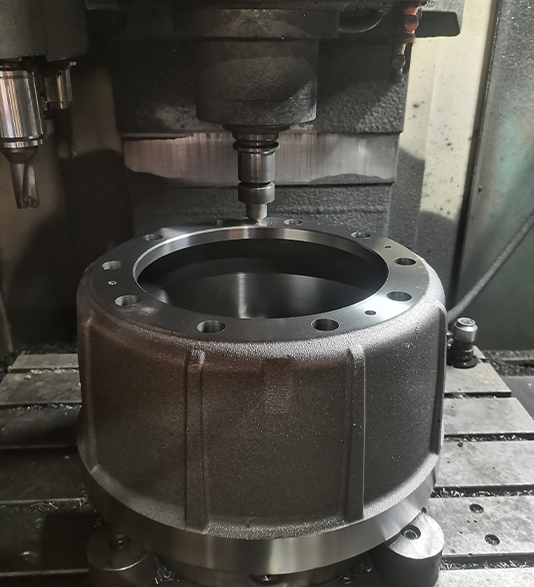Nov . 25, 2024 20:21 Back to list
Understanding the Functionality and Maintenance of Hydraulic Brake Drums for Vehicles
Understanding Hydraulic Brake Drums Mechanism and Benefits
Hydraulic brake drums play a crucial role in the braking systems of various vehicles, including cars, trucks, and motorcycles. They are integral components that ensure a safe and responsive braking experience. Understanding how hydraulic brake drums work and their advantages can help users appreciate the engineering behind modern braking systems.
The Mechanism
At the heart of hydraulic brake drums is the principle of hydraulic force. When the driver presses the brake pedal, hydraulic fluid is forced through lines to the brake cylinder, activating the brake shoes. The hydraulic pressure pushes the brake shoes outward against the inner surface of the drum. This contact generates friction, which slows down the vehicle.
The hydraulic brake drum system is composed of several components the brake drum, brake shoes, wheel cylinder, and hydraulic fluid. The brake drum is a cylindrical component that rotates with the wheel. The brake shoes are lined with a friction material that provides the necessary grip against the drum. The wheel cylinder houses pistons that push the shoes outward when hydraulic pressure is applied.
One of the key advantages of hydraulic systems is their ability to evenly distribute braking force. This ensures that all wheels can engage and slow down uniformly, minimizing the risk of skidding or losing control. Additionally, hydraulic systems can be designed with dual-circuit setups, enhancing safety by allowing one circuit to function even if the other fails.
Advantages of Hydraulic Brake Drums
hydraulic brake drum

1. Effective Braking Performance Hydraulic brake drums provide superior stopping power compared to mechanical systems. The hydraulic force amplifies the driver’s input, allowing for effective braking even under extreme conditions. This is particularly important for heavier vehicles that require more force to decelerate.
2. Reduced Maintenance Hydraulic systems generally require less frequent maintenance than their mechanical counterparts. Since they have fewer moving parts, the risk of wear and tear is diminished. Brake shoes and fluid are the primary maintenance concerns, making it easier for vehicle owners to keep their systems in optimal condition.
3. Heat Dissipation Braking generates substantial heat due to friction. Hydraulic brake drums are designed to dissipate this heat effectively. The larger surface area of the drum compared to disc brakes enables better heat distribution, reducing the risk of brake fade during extended use.
4. Increased Longevity The materials used in hydraulic brake drums, combined with their operational efficiency, often result in a longer lifespan than disc brake systems. This longevity translates into cost savings for vehicle owners, as replacements and repairs are less frequent.
5. Versatility Hydraulic brake drums are versatile and can be used in various types of vehicles, from compact cars to heavy-duty trucks. Their adaptability makes them a popular choice for manufacturers looking to implement a reliable braking solution across different models.
Conclusion
Hydraulic brake drums are a testament to the advancements in automotive technology. Their efficient, reliable, and effective braking capabilities make them an essential component of modern vehicles. As safety regulations continue to evolve, the hydraulic brake drum system’s ability to provide consistent and reliable performance ensures that it remains a vital part of vehicle design for the foreseeable future. Understanding how these systems work and the benefits they deliver can help drivers appreciate the complexities of vehicle safety features and make informed decisions regarding their vehicle's maintenance and operation. Whether navigating city streets or highways, knowing that your vehicle is equipped with a high-quality hydraulic brake system can provide peace of mind and confidence in your driving experience.
-
Scania Brake Drums: OEM Quality for Optimal Safety & Durability
NewsAug.16,2025
-
R.V.I: Advanced Remote Visual Inspection for Precision
NewsAug.15,2025
-
Discover HYUNDA: Innovative Vehicles, Equipment & Solutions
NewsAug.14,2025
-
R.V.I: Unlock Advanced Insights & Real-time Performance
NewsAug.13,2025
-
Kamaz Brake Drum: Durable & Reliable for Heavy Duty Trucks
NewsAug.12,2025
-
Heavy Duty Iveco Brake Drum - Premium Quality & Safety
NewsAug.11,2025
